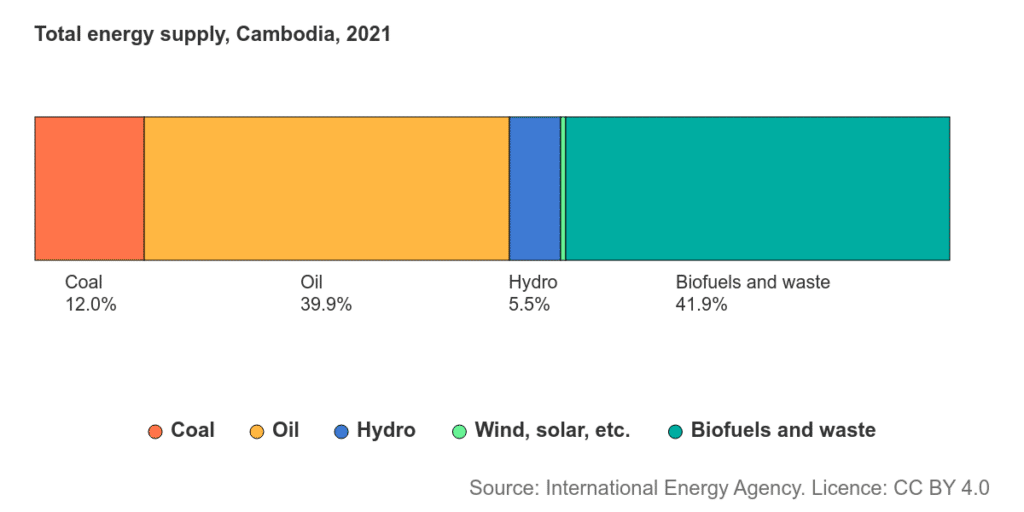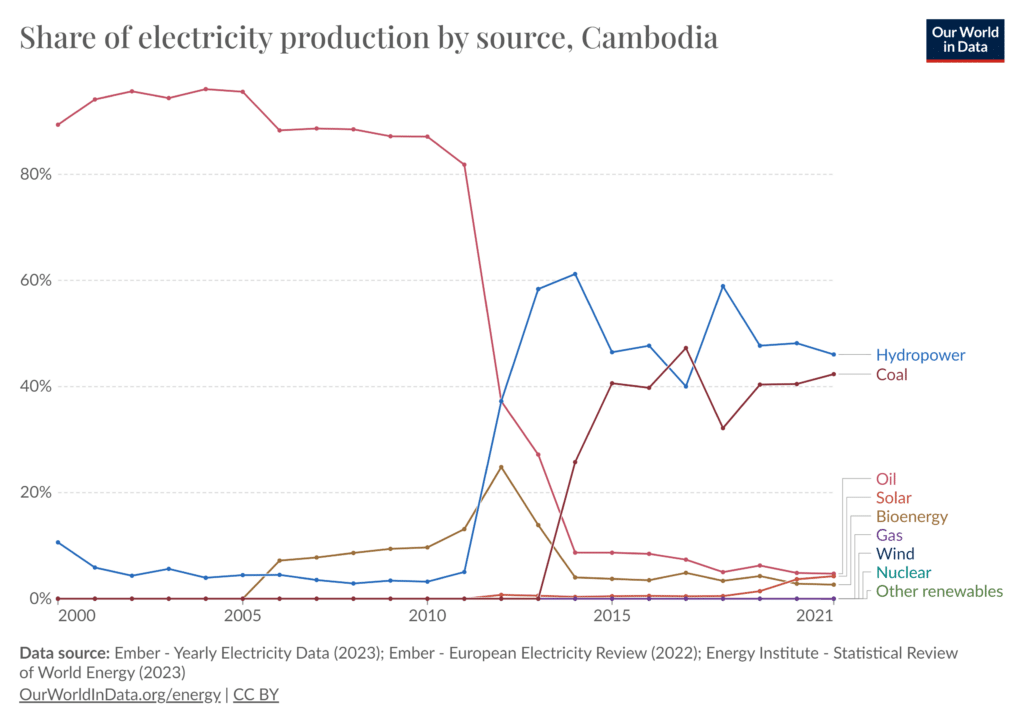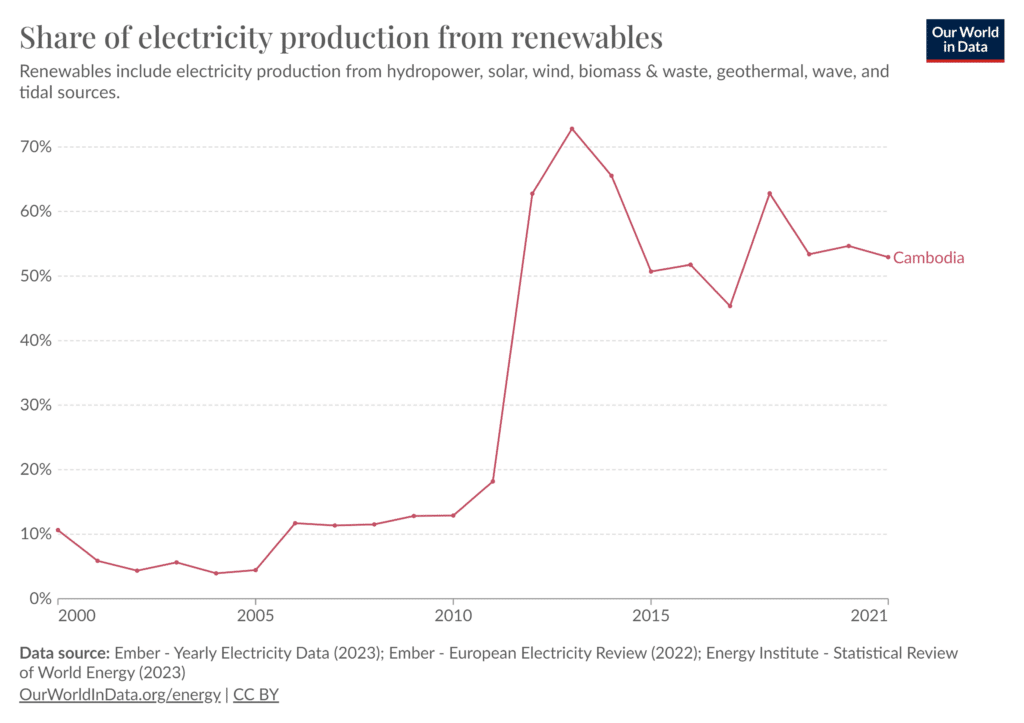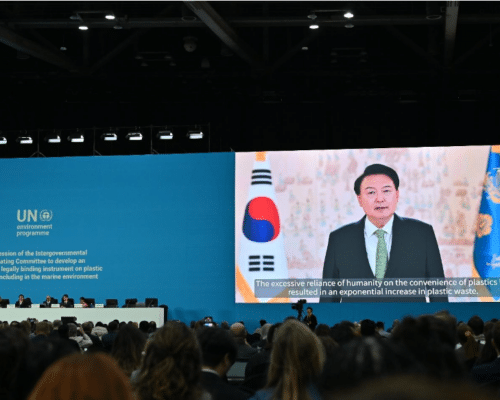Renewable Energy in Cambodia: Continued Growth
Source: Mekong Eye
13 March 2024 – by Eric Koons Comments (1)
Renewable Energy in Cambodia 2024
As Cambodia strides towards its net-zero 2050 goal, developing renewable energy in Cambodia is an important step. While the largest share of emissions in the country comes from land-use changes, primarily deforestation and forest degradation, the energy sector in Cambodia is second.
This is an interesting position for Cambodia because its electrification rate and per capita emissions are the second lowest in the region. While, on the one hand, it can appear challenging to scale up electrification primarily with renewable energy in Cambodia, it is also an opportunity. Off-grid solar, wind power and hydropower offer a route to electrify typically hard-to-reach parts of the country. This will not only support the nation’s decarbonisation goals but also boost the standard of living in the country.
What Is the Main Source of Power in Cambodia?
Cambodia’s energy mix is unlike most other Southeast Asian countries, which heavily rely on natural gas, coal and oil. Instead, biofuels and waste are the main source of power in Cambodia, accounting for 41.9% of the country’s total electricity supply. This is primarily due to the low electrification rates and the use of wood and agricultural byproducts for light and cooking. Oil holds the second-largest share at 39.9% and coal at 12%.

When looking at just power generation, this image shifts. Around 46% of the country’s electricity comes from hydropower and 42% from coal. The remaining 12% is a mix of solar, oil and biomass energy. This is a dramatic shift from just a decade ago when oil generated over 80% of the country’s electricity. The country’s location at the mouth of the Mekong River Basin, which is the largest river in Southeast Asia, provides a significant opportunity for ongoing hydropower growth.

What Percentage of Cambodia’s Energy Is Renewable?
In total, 52.93% of the country’s electricity and 59.2% of its total energy supply come from renewable energy sources. These are among the highest rates in the region. Cambodia’s renewable energy mix is heavily dominated by hydropower and biofuels.

However, the country has raised concerns about its large reliance on hydropower due to its variable output based on climate conditions. Less rainfall or too intense rain events can alter the energy output of its hydropower facilities. Both of these situations become more likely as climate change progresses. For example, 2022 had some of the lowest hydropower outputs on record and forced the government to import fossil fuels to meet the growing energy demand.
The government recently put a halt on new hydropower facilities on the Mekong River until 2030. In the interim, the country will work on augmenting its existing hydropower capacity with solar and coal-fired power plants.
What Is the Target Capacity of Renewable Energy in Cambodia?
The Cambodian government sees its ambitious renewable energy goal of sourcing 70% of its energy from renewable sources by 2030 as a core component of improving the country’s energy security, affordability and reliability. This will be essential to reduce the country’s electricity imports, which contributed 25% of its power needs in 2019. Meanwhile, the country’s power demand is growing at 16% annually.
This growth in green energy will primarily consist of solar and hydropower. The country’s recent Power Development Master Plan 2022-2040 (PDMP) targets a total domestic energy capacity of 27.7% hydropower and 17.9% solar by 2030. By 2040, the PDMP targets 21.4% from hydropower and 29.8% from solar power. During this period, there will be no new development of coal-fired power plants or hydropower dams on the mainstream Mekong River.
What Are the Largest Renewable Energy Projects in Cambodia?
Cambodia’s renewable energy sector has several major renewable energy projects contributing a significant portion of the country’s domestic energy supply.
Hydropower: Sesan-II Dam
Cambodia’s largest single renewable energy facility is the Sesan-II hydropower power plant located in northeast Cambodia. The facility is built on the Se San River, a major tributary to the Mekong River, and has a total energy capacity of 400 MW.
The dam is 6.5 km long, making it one of Asia’s largest dams and covers nearly 100 square km of land. In 2020, the facility generated 1,696 GWh of electricity, which is 20% of Cambodia’s domestic electricity generation.
Solar Power: Schneitec Infinite Pursat Solar PV Park
The Infinite Pursat Solar PV Park is the country’s largest at an installed capacity of 90 MW. While this is far less than the Sesan-II hydropower facility, it accounts for nearly a third of the country’s domestic solar production.
The solar park is located in the eastern province of Pursat and began operating in 2020 with a capacity of 30 MW. Since then, it has been expanded to the current 90 MW with plans to grow to 240 MW in the coming years.
Funding Cambodia’s Clean Energy Transition
Cambodia’s renewable energy goals and strategies outlined in the PDMP are ambitious and will help the country align with its decarbonisation by 2050. However, estimates show that just meeting the interim 2040 PDMP will cost over USD 9 billion. Only USD 2.5 billion is currently committed and earmarked explicitly for renewable energy projects from 2022 to 2025.
Due to the government’s lack of capital, filling this gap will require significant private-sector investment in the clean energy market. This comes as a double-edged sword because increased private sector projects will likely lead to higher consumer energy rates, and Cambodia already has some of the highest consumer energy prices in the region.
Outside support for regional governments and strong grid connections to neighbouring countries will be critical in driving this transition at an affordable rate. Regardless, maintaining reliance on fossil fuels is not an option, and renewable energy provides Cambodia with a pathway to bolster its energy security and electrification.
by Eric Koons
Eric is a passionate environmental advocate that believes renewable energy is a key piece in meeting the world’s growing energy demands. He received an environmental science degree from the University of California and has worked to promote environmentally and socially sustainable practices since. Eric’s expertise extends across the environmental field, yet he maintains a strong focus on renewable energy. His work has been featured by leading environmental organizations, such as World Resources Institute and Hitachi ABB Power Grids.
Read more





